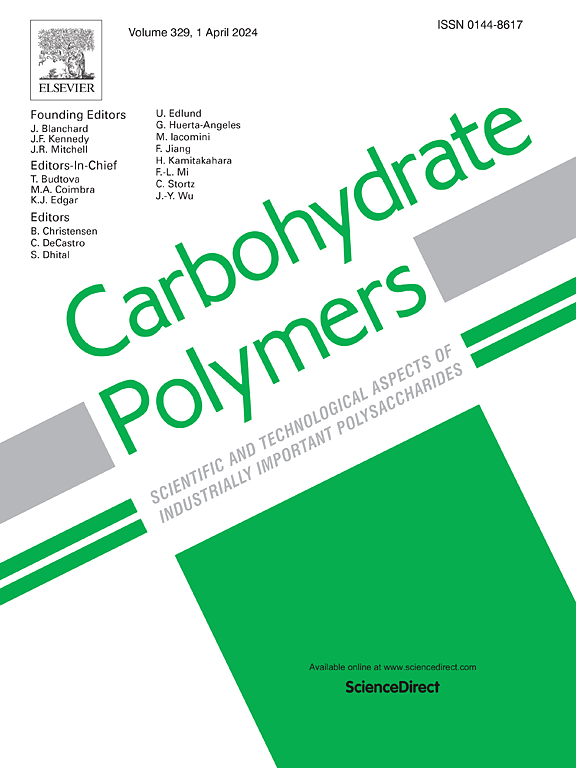Alkali-extracted rhamnogalactoarabinan from Chaetomorpha linum: Characterisation and anti-type 2 diabetic effect
IF 10.7
1区 化学
Q1 CHEMISTRY, APPLIED
引用次数: 0
Abstract
Sulphated galactoarabinans, extracted from members belonging to the Cladophoraceae (Chlorophyceae) family, have been reported to have potential as novel anti-diabetic agents. However, relatively few studies have investigated this research topic. In the present study, a water-soluble polysaccharide designated CBS2 was obtained from Chaetomorpha linum using dilute alkaline solution, preparative anion exchange, and size-exclusion chromatography. Chemical and high-performance liquid chromatography analyses revealed that CBS2 is a sulphated rhamnogalactoarabinan. Gas chromatography-mass spectrometry and nuclear magnetic resonance analyses revealed that the backbone of CBS2 was primarily made up of 4-linked β-L-arabinopyranose, which was sulphated at C-2/C-3. The branches were primarily composed of 4-linked-β-d-galactopyranose and positioned at C-3 of 4-linked β-L-arabinopyranose. Transmission electron microscopy and thioflavin T fluorescence experiments showed that CBS2 successfully suppressed human islet amyloid polypeptide (hIAPP) aggregation in vitro. In NIT-1 cells, CBS2 reduced hIAPP-induced cytotoxicity. CBS2 markedly lowered the production of intracellular reactive oxygen species and oxidative stress induced by hIAPP aggregation in NIT-1 cells. In addition, CBS2 co-localised with mitochondria and protected mitochondrial function from hIAPP aggregation-induced damage by stabilising the mitochondrial membrane potential. These data suggest that CBS2 may potentially serve as an anti-diabetic agent for the treatment of type 2 diabetes mellitus.
求助全文
约1分钟内获得全文
求助全文
来源期刊

Carbohydrate Polymers
化学-高分子科学
CiteScore
22.40
自引率
8.00%
发文量
1286
审稿时长
47 days
期刊介绍:
Carbohydrate Polymers stands as a prominent journal in the glycoscience field, dedicated to exploring and harnessing the potential of polysaccharides with applications spanning bioenergy, bioplastics, biomaterials, biorefining, chemistry, drug delivery, food, health, nanotechnology, packaging, paper, pharmaceuticals, medicine, oil recovery, textiles, tissue engineering, wood, and various aspects of glycoscience.
The journal emphasizes the central role of well-characterized carbohydrate polymers, highlighting their significance as the primary focus rather than a peripheral topic. Each paper must prominently feature at least one named carbohydrate polymer, evident in both citation and title, with a commitment to innovative research that advances scientific knowledge.
 求助内容:
求助内容: 应助结果提醒方式:
应助结果提醒方式:


